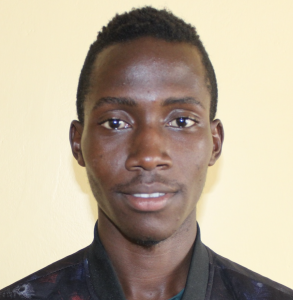Recently, a member of Imbinga community visited the home of Mr. Khaika's compound to see the transformation done at Arunga Spring after it was protected, earlier this year. The man then reached out to us and asked for help protecting the spring located near his home - Imbinga Spring.
The water at the spring is consistently available, but it is exposed to many contaminants making it unsafe for drinking. Cases of diarrhea and other waterborne diseases are common due to drinking water from the spring. The cost of drinking dirty water is immense. Families end up spending a lot of money on medical treatments. Students miss school when they are sick and adults lose days working - which directly impacts the financial wellbeing of a family.
People here are mostly farmers and practice large scale maize and sugarcane planting to make an income. Others grow small crops like traditional vegetables, bananas, and avocados on a small scale for family consumption. Many households also keep livestock for milk and for selling the meat to butchers.
Imbinga is a rural community with a few modern bricked homes. Most of the houses are made of mud walls with iron sheet roofs. The place is peaceful but one will not fail to hear children having fun. Farms make up the majority of the landscape with a few rock outcrops that are noticeable as one moves around the area.
In Imbinga, a normal day begins with the women making breakfast and ensuring there is water for use throughout the day. Many women will visit Imbinga spring first thing in the morning and again later in the day to meet all of their needs. Everyone then disperses to their different places of work and children to school.
Some engage as manual laborers, others head out with their motorcycles and work as bodaboda (taxi drivers) but the largest number of people head out to their farms and spend the better part of the day tilling and ensuring that their crops are in good shape. The children also help take care of livestock on their days off and when not in school. Men gather up in small groups toward the evening and engage in small talk as the women prepare dinner. Dinner is the most important meal as everyone is expected to be present to eat as a family.
What we can do:
Spring Protection
Protecting the spring will help provide access to cleaner and safer water. Construction will keep surface runoff and other contaminants out of the water. With the community’s high involvement in the process, there should be a good sense of responsibility and ownership for the new clean water source.
Fetching water is a task predominantly carried out by women and young girls. Protecting the spring and offering training and support will, therefore, help empower the female members of the community by freeing up more of their time and energy to engage and invest in income-generating activities.
Training
Community members will attend hygiene and sanitation training for at least 2 days. This training will ensure participants have the knowledge they need about healthy practices and their importance.
The facilitator plans to use Participatory Hygiene and Sanitation Transformation (PHAST), Community-Led Total Sanitation (CLTS), Asset-Based Community Development (ABCD), group discussions, handouts, and demonstrations at the spring. One of the most important topics we plan to cover is the handling, storage, and treatment of water. Having a clean water source will be extremely helpful, but it is useless if water gets contaminated by the time it is consumed. We will also emphasize the importance of handwashing.
Training will result in the formation of a committee that will oversee the operations and maintenance of the spring. They will enforce proper behavior around the spring and delegate tasks that will help preserve the site, such as building a fence and digging proper drainage channels. The fence will keep out destructive animals, and the drainage will keep the area’s mosquito population at a minimum.
Sanitation Platforms
On the final day of training, participants will select 5 families that should benefit from new concrete latrine floors. Training will inform the community and selected families on what they need to contribute to make this project a success. They must mobilize locally available materials, including bricks, clean sand, and gravel. The 5 families chosen for sanitation platforms must prepare by sinking a pit for the sanitation platforms to be placed over. All community members must work together to make sure that accommodations and food are always provided for the work teams.

 Protected Spring
Protected Spring
 Rehabilitation Project
Rehabilitation Project








































